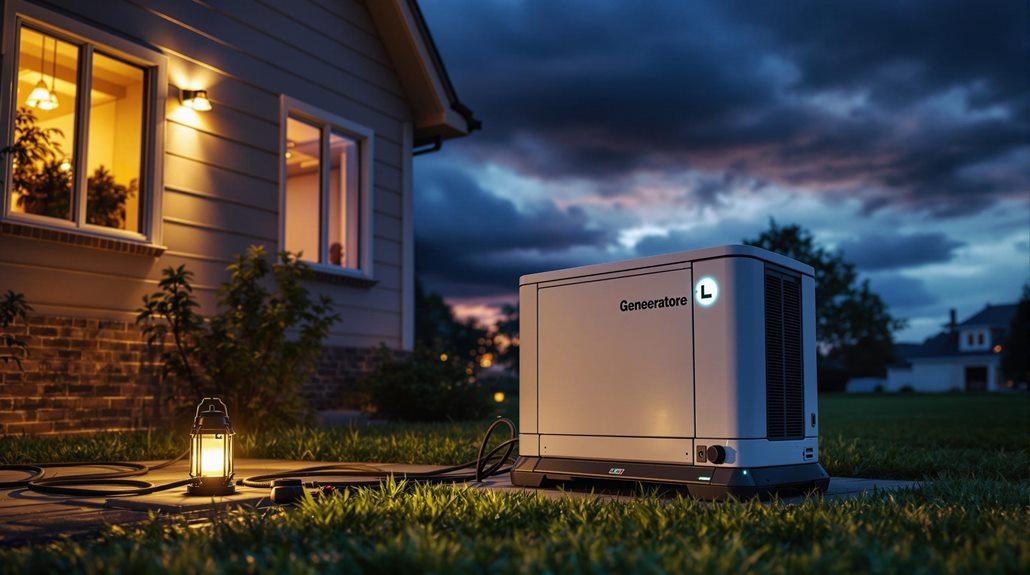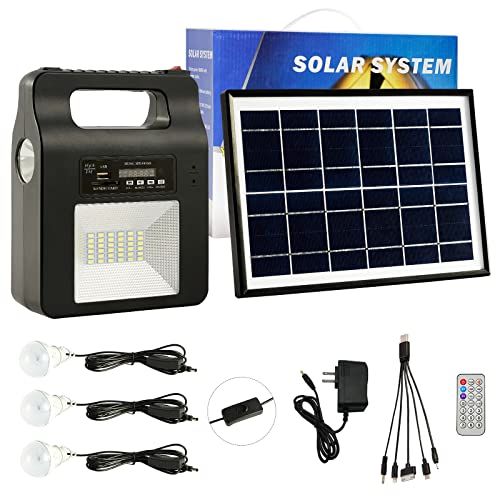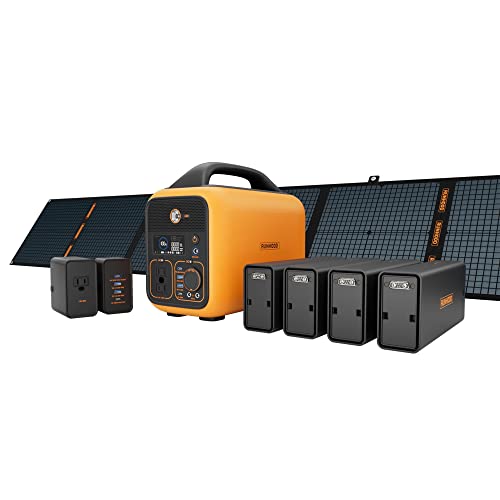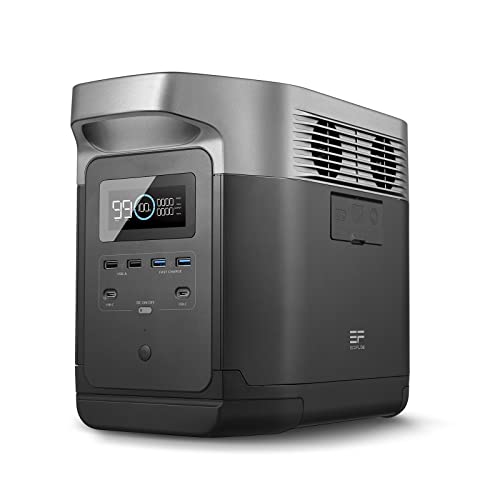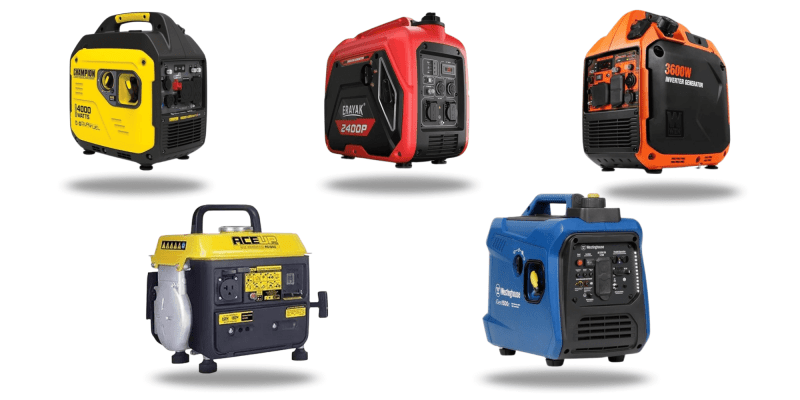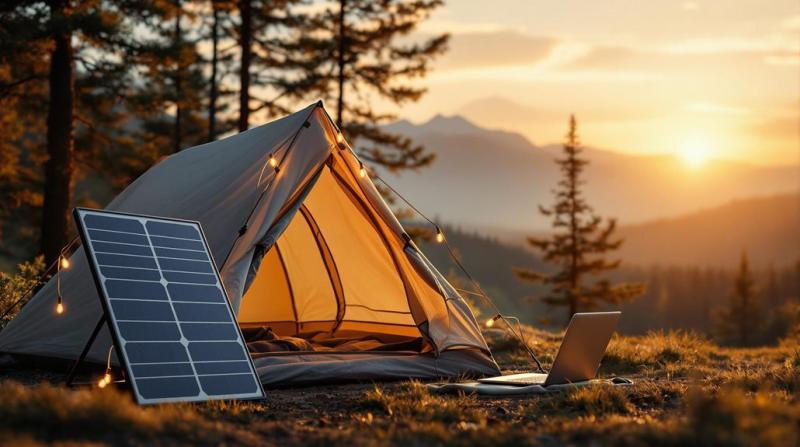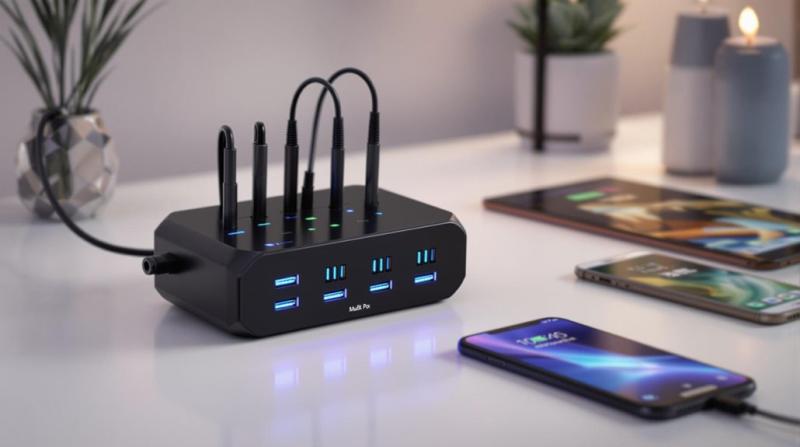To guarantee reliable backup power for your home, start by calculating your total power requirements and selecting a generator with 20-25% extra capacity. Position your generator 20 feet from structures on a dry, level surface, with exhaust directed away from windows. Install CO alarms on every floor and test them regularly. Store fuel in ANSI-approved containers 50 feet from buildings, and rotate supplies monthly. Use heavy-duty outdoor-rated extension cords matched to your electrical load. Install a professional transfer switch, maintain your equipment quarterly, and create an emergency power plan prioritizing essential devices. These foundational steps will guide you toward holistic backup power protection.
Key Takeaways
- Calculate your total power requirements and select a generator with 20-25% extra capacity to handle motor startup surges.
- Place generators at least 20 feet from home structures on dry, level surfaces with proper ventilation.
- Install carbon monoxide alarms on every floor and test them regularly to prevent CO poisoning.
- Use heavy-duty, outdoor-rated extension cords that match the electrical load requirements of your devices.
- Create a prioritized list of essential devices and develop a clear backup power allocation strategy for emergencies.
Calculating Your Power Requirements
Accurate power planning is essential when setting up a backup power system for your home. Power station sizing substantially varies, from 100 Wh for small devices to over 2,000 Wh for larger appliances, so choosing the right capacity is paramount. To determine your generator needs, you'll need to thoroughly assess your electrical requirements by adding up the wattage of all devices you plan to power during an outage. Start by identifying critical items like refrigerators, medical equipment, and communication devices that you can't live without.
When you're calculating your power needs, don't forget to check the power labels on your appliances carefully. You'll need to convert watts to amps by dividing the watts by 120 volts, which will help you determine the exact electrical capacity required from your generator. To safeguard you've got enough power when you need it, plan for 20-25% more capacity than your total calculated load to handle motor startup surges and unexpected power demands.
For the most precise assessment, consider working with a professional electrician who can evaluate your home's electrical system. They'll help you create a strategic power allocation plan that prioritizes your essential devices and guarantees you're using your backup power efficiently during emergencies.
Selecting the Right Generator Size
Once you've calculated your total power requirements, choosing the right generator size becomes a straightforward process. You'll need to carefully review the power labels on your appliances directly, converting watts to amps by dividing the total watts by your home's standard voltage of 120V. This calculation helps you determine the precise electrical load your generator must handle during an outage. High-capacity portable models like the Honda EU7000iS and DuroMax XP12000EH offer reliable power output with built-in safety features for home backup needs.
To guarantee reliable power transfer during emergencies, select a generator that's rated at least 20-25% above your calculated needs. This buffer prevents overloading and accounts for the additional starting surge watts required by motor-driven appliances like refrigerators. For example, if your calculations show you need 5,000 watts, you should consider a generator rated for at least 6,000-6,250 watts.
If you're unsure about your calculations, it's wise to consult a professional electrician. They can perform a detailed assessment of your home's specific electrical requirements and recommend the ideal generator size. This expert guidance helps guarantee you'll have sufficient power during outages while avoiding the expense of an oversized unit.
4.82 out of 5 starsSolar Generator with Panels Included,Portable Power Generators Station 12000mAh with 3 LED Lamps, Emergency Solar Powered Generator for Home Use Camping Emergency Power Supply
Stay Prepared with Our Solar-Powered Portable Power Station and Generator for All Your Emergency Needs
Product information
Product Review Score
Product links
Safe Generator Placement Guidelines
Proper generator placement stands as your first line of defense against carbon monoxide poisoning and electrical hazards. When setting up your portable generator, you'll need to position it at least 20 feet away from your home, with the exhaust pointing away from any windows, doors, or ventilation openings to prevent deadly carbon monoxide from seeping inside. Modern high-capacity portable generators like the Honda EU2200i and Westinghouse iGen4500 offer quieter operation and efficient fuel consumption, making them ideal for residential use.
Choose a dry, level surface for your generator's operation, ensuring it's protected from rain and moisture that could create dangerous electrical situations. You'll want to maintain a 3-foot clearance zone around the entire unit, which allows proper airflow and prevents overheating while you're running the equipment. Never attempt to operate your generator in enclosed or partially enclosed spaces, even if you think there's adequate ventilation.
Carbon Monoxide Detection Systems
Installing an effective carbon monoxide detection system ranks as one of the most critical safety measures you can take when using backup power. Fuel-efficient designs help minimize CO emissions, but proper detection remains essential for safety. You'll need to place carbon monoxide alarms on every floor of your home, as this odorless gas can quickly reach lethal levels and has claimed 770 lives in the past decade alone. Since CO poisoning can be fatal within minutes at high concentrations, you can't afford to take chances with faulty or poorly maintained detection equipment.
Make it a habit to test your CO detection devices regularly, replacing batteries annually to guarantee they're always operational. When choosing a backup generator, look for models equipped with CO safety shutoff features, as these provide an extra layer of protection against dangerous emissions. You'll want to familiarize yourself with carbon monoxide poisoning symptoms, including dizziness, weakness, and nausea. If your CO alarm sounds, don't hesitate or investigate - exit your home immediately and get to fresh air. Remember, proper CO detection isn't just about installing alarms; it's about maintaining a complete safety system that includes regular testing, timely maintenance, and having a clear evacuation plan.
Proper Fuel Storage Methods
Safe fuel storage practices go hand-in-hand with CO detection to create an all-encompassing backup power safety system. When you're keeping generator fuel on hand, it's essential to use ANSI-approved safety containers with secure lids that prevent spills and contamination. For high-capacity generators like the Generac G0080000 that can run continuously, maintaining proper fuel storage becomes even more critical for extended operation. You'll want to store fuel in red, clearly labeled containers with a maximum capacity of 5 gallons to comply with local regulations.
Your fuel stored location should be well-ventilated and locked, positioned at least 50 feet away from any structures or ignition sources. Since proper fuel storage directly impacts your generator's performance and carbon monoxide emissions, you'll need to maintain temperatures between 40-70 degrees Fahrenheit and keep containers out of direct sunlight. Don't forget to rotate your fuel supply every 30 days and add a fuel stabilizer to prevent degradation.
Remember that improper storage can lead to fuel contamination, which affects generator performance and potentially increases dangerous emissions. By following these storage guidelines, you're not only protecting your fuel investment but also ensuring your generator will operate safely and efficiently when you need it most.
$891.62
4.94 out of 5 starsRunhood Rallye 600 Pro Portable Power Station
Power up Your Adventures Anywhere with the Runhood Rallye 600 Pro Portable Power Station
Product information
Product Review Score
Product links
Extension Cord Safety Practices
With backup power systems, your choice of extension cords can mean the difference between reliable operation and potential hazards. When selecting extension cords for your generator, you'll need to match your power needs with cords specifically rated for outdoor use and heavy-duty applications. Always check that the cord's amp rating meets or exceeds your total electrical load before wiring by plugging in your devices.
Inspect your extension cords regularly to verify they're free of cuts, tears, or exposed wiring that could create dangerous situations. Don't forget to verify that the grounding prong is intact and secure. You'll want to keep cord lengths as short as practically possible while maintaining proper wire gauge thickness for your specific distance and power requirements. Thicker gauge cords (with lower numbers) are essential for longer runs and higher electrical loads.
When setting up your backup power system, avoid running extension cords under carpets or across walkways where they could create tripping hazards or overheat. Instead, plan your cord placement carefully, keeping them visible and away from high-traffic areas while maintaining proper ventilation.
Transfer Switch Installation Process
A transfer switch serves as the pivotal link between your generator and home electrical system, requiring professional installation to meet local building codes. During installation, an electrician will first disconnect your home's power supply and mount the transfer switch near your main electrical panel. They'll guarantee proper grounding and establish secure connections between your house wiring and the switch.
The process involves creating dedicated circuits that'll connect to your permanent generator or portable power source. Your electrician will install the proper gauge wiring between the transfer switch and your electrical panel, carefully labeling each circuit for easy identification during power outages. This setup prevents dangerous backfeeding that could harm utility workers during repairs.
You'll need to decide which circuits are essential for backup power, typically including your refrigerator, furnace, well pump, and select wall outlet circuits. The electrician will test each connection thoroughly, verifying proper operation before finalizing the installation. They'll also provide you with clear instructions on how to safely switch between utility and generator power when needed, guaranteeing you're comfortable with the operation of your new system.
Emergency Power Priority Planning
Proper emergency power priority planning starts with identifying your household's most pivotal electrical needs during an outage. You'll need to calculate the total watts required for essential devices, ensuring your generator can handle the combined electrical load of priority equipment during power outages.
Start by creating a detailed list of indispensable devices, beginning with life-sustaining medical equipment like oxygen machines and medication refrigeration. Next, prioritize essential communication tools and emergency lighting systems, which are imperative for safety and staying informed. When connecting these devices, avoid using extension cords whenever possible, as they can create hazards and reduce power efficiency.
Set up a systematic power distribution plan by installing dedicated circuits for critical equipment through a properly rated transfer switch. You'll want to stagger the use of non-essential devices to prevent overloading your generator. Remember to keep carbon monoxide safety in mind by positioning your generator outdoors and away from windows. Consider using smart power strips with built-in priority settings to automatically manage power distribution among your devices, ensuring that imperative equipment always receives power first when operating on limited backup capacity.
Generator Maintenance Schedule
Regular maintenance forms the cornerstone of reliable generator performance during emergencies. You'll need to establish a maintenance schedule that includes monthly inspections, quarterly servicing, and annual professional checkups to guarantee your generator remains reliable when you need it most.
Never attempt maintenance on a hot engine - always let it cool down completely before performing any work. During your monthly checks, you'll want to inspect fuel lines, change the oil if needed, and test the battery connections. Clean any debris around the unit, and check for signs of wear or damage that could compromise performance.
When refueling, wait for the generator to cool down before refueling to prevent accidents with gasoline spilled on hot surfaces. Make sure you're documenting all maintenance activities in a logbook, noting dates, actions taken, and any unusual findings. Every quarter, you should change the air filter, check spark plugs, and verify that all safety systems are functioning properly. Schedule annual professional servicing to address more complex maintenance tasks, including fuel system cleaning and thorough testing of all components. Following this structured approach will markedly extend your generator's lifespan and guarantee its reliability during power outages.
Weather Protection Strategies
Protecting your backup generator from harsh weather demands strategic placement and appropriate shelter solutions. When you use a generator, position it at least 20 feet away from your home's structures, with the exhaust pointing away from windows and doors to prevent carbon monoxide from seeping inside. Install a weatherproof canopy or cover that shields the unit while maintaining proper ventilation for safe operation.
Your generator needs a stable foundation to operate safely in any weather condition. Place it on a level, dry surface like a concrete pad or sturdy wooden platform, which helps prevent moisture damage and electrical hazards. Remember to maintain a 3-foot clearance zone around the unit to guarantee adequate airflow and prevent overheating during operation.
For electrical connections during bad weather, use outdoor-rated extension cords that match your generator's power requirements. These cords should be weather-resistant and properly gauged to handle the wattage load safely. Keep all connections elevated and protected from standing water, and regularly inspect them for signs of wear or damage that could compromise safety during storms or severe weather conditions.
Frequently Asked Questions
How Far Away From the House Should a Portable Generator Be?
While you might want your generator close for convenience, safe power placement is vital for your well-being. You'll need to position your portable generator at least 20 feet from your house to minimize exhaust risks and prevent deadly carbon monoxide from seeping inside. This safe distance also helps address noise concerns, though generator proximity shouldn't be compromised for quieter operation. Remember to direct the exhaust away from windows and doors for additional safety.
What Can I Use for Backup Electricity?
You've got several reliable options for backup electricity. You can install standby generators that automatically kick in during outages, or use portable power stations for smaller needs. Consider backup batteries paired with solar panels for a sustainable solution. Inverter systems provide stable power that's safe for electronics. Each option has different capacities and costs, so you'll want to match the solution to your specific power needs and budget.
Where Should You Not Put a Portable Generator?
With CO poisoning causing over 400 deaths annually, you'll want to be extra careful with generator placement. Never put your portable generator in risky spots like garages, basements, or enclosed spaces - these are absolute no-go zones. Keep it at least 20 feet from your home's doors, windows, and vents. Unsafe areas include covered porches, carports, or any place where exhaust fumes can collect. Dangerous locations under awnings are also off-limits.
Is It Safe to Have a Generator in the House?
No, it's never safe to operate a generator inside your house. Indoor generator placement creates lethal carbon monoxide risks that can kill within minutes. You'll need to follow strict safety protocols by placing your generator at least 20 feet away from your home, with exhaust pointing away from doors and windows. Besides carbon monoxide dangers, indoor use also creates serious electrical hazards and fire risks for your family.
